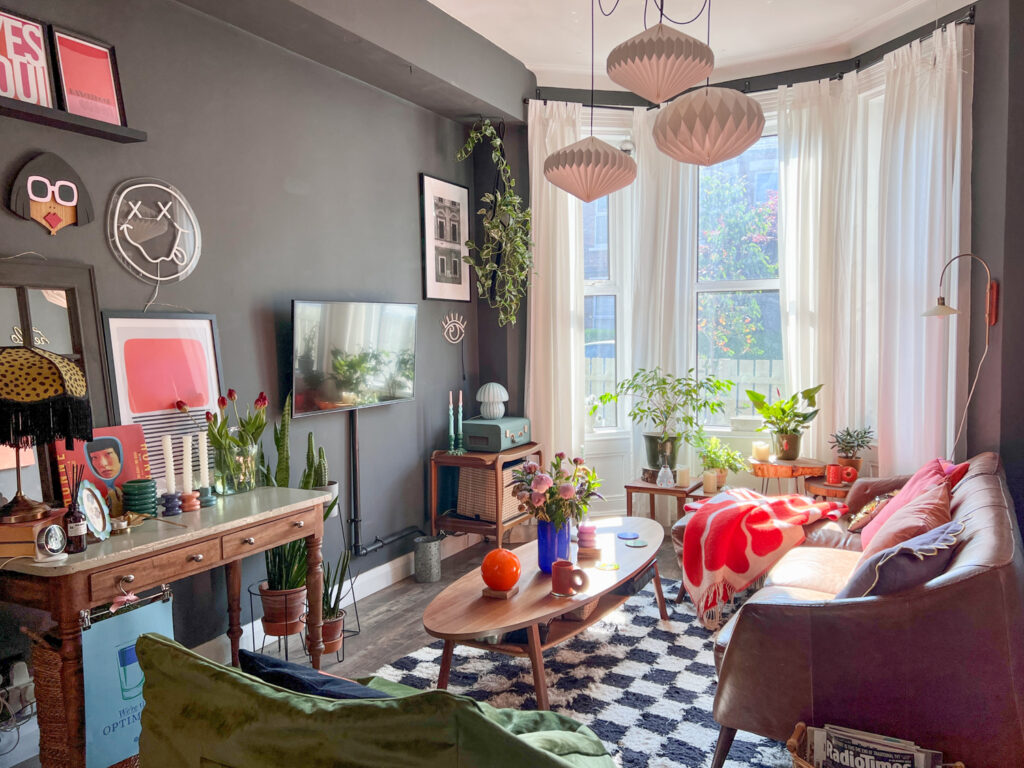
Let’s be honest. Our homes can start to feel a little… stale. That mass-produced print from a big-box store? It’s lost its charm. And the constant churn of fast furniture? It’s not just hard on your wallet; it’s tough on the planet, too.
But there’s a beautiful rebellion happening in home decor. It’s a shift away from the new and shiny and towards the storied, the unique, the saved. It’s the world of upcycled and repurposed decor. This isn’t about making do with less. It’s about imagining more from what’s already here.
What’s the Big Deal, Anyway? Upcycling vs. Repurposing
People often use these terms interchangeably, and that’s okay. But there is a subtle, fun distinction. Think of repurposing as a change of career for an object. That old wooden ladder becomes a quirky bookshelf. A vintage suitcase gets a new life as a side table. The form stays largely the same, but its function gets a complete makeover.
Upcycling, on the other hand, is more like a glow-up. It’s taking something and enhancing its value and beauty. Sanding down a thrifted dresser and painting it a vibrant color is upcycling. Turning a collection of wine corks into a cohesive bulletin board is upcycling. You’re adding creativity and labor to create something better than the original.
Both are fantastic ways to inject personality and sustainability into your space. And the best part? You don’t need to be a master craftsman to get started.
Trends That Are Turning Heads (and Trash into Treasure)
So, what are people actually doing? The current upcycled home decor trends are all about texture, history, and a touch of the unexpected.
The New Vintage: Curated, Not Dated
Forget the stuffy, formal antiques of your grandmother’s era. The new vintage is about mixing eras with confidence. It’s that 1970s ceramic lamp with a modern linen shade. It’s a mid-century modern chair placed next to a raw, industrial-style table you built from reclaimed wood.
The key is to look for pieces with good bones and character. A little sanding, a new coat of paint or oil, and maybe updated hardware can transform a forgotten relic into a focal point. This approach to repurposed vintage furniture creates a layered, collected-over-time look that feels deeply personal.
Textile Rebirth: From Rags to Riches
This is a huge one. The fashion industry’s waste problem has sparked a major movement in home textiles. Designers and DIYers are taking discarded fabrics and giving them a second act.
Think of patchwork quilts made from old jeans and flannel shirts. Or bold, one-of-a-kind throw pillows crafted from vintage kantha quilts or African mudcloth. Even old sweaters can be felted and turned into cozy pillow covers. This trend adds incredible warmth and a narrative quality to a room—every scrap has a past life.
The Industrial Reclamation
This trend has been around for a while, but it’s evolving. It’s no longer just about exposed brick and ductwork. Now, it’s about incorporating salvaged industrial materials. We’re seeing:
- Factory Cart Coffee Tables: Those heavy, cast-iron-wheeled carts are the ultimate statement piece.
- Repurposed Wooden Beams: Used as mantels, shelving brackets, or even as the base for a live-edge table.
- Old Pipes and Fittings: Transformed into rolling clothing racks, sturdy shelving units, or even minimalist bed frames.
This style brings a raw, architectural element to a space that contrasts beautifully with softer textures.
Your DIY Playbook: Simple Upcycling Projects to Start With
Feeling inspired? Good. Let’s talk about some accessible DIY upcycled home decor projects. You don’t need a fancy workshop for these.
1. The Jar-lightful Transformation
We all have them. Pasta sauce jars, pickle jars—they accumulate. Instead of recycling them, why not upcycle? Clean them thoroughly, remove the labels, and you’ve got a vessel for:
- Hanging Herb Gardens: Add some twine and a little soil, and you’ve got a kitchen windowsill garden.
- Custom Vases: Paint the outside with matte chalk paint for a rustic feel, or wrap them in jute twine.
- Storage Solutions: Use them to organize craft supplies, kitchen pantry items, or bathroom cotton balls. Uniform jars look intentional, not like clutter.
2. The Furniture Flip
This is where you can really see a dramatic change. Head to a local thrift store, flea market, or even check your own basement. Look for a small piece of furniture—a side table, a wooden chair, a small dresser. Avoid anything with structural damage for your first project.
Here’s a simple process:
- Clean & Sand: Give it a good wipe-down. Then, lightly sand the surface to help the new paint adhere.
- Prime (Sometimes): For a big color change, especially over a dark stain, a primer is your best friend.
- Paint & Protect: Use a good quality furniture paint. Chalk paint is popular because it often requires less prep. Finish with a wax or polyurethane topcoat for durability.
- Update Hardware: Swapping out old knobs or pulls for something modern is like putting jewelry on your piece. It makes a world of difference.
3. Picture Frame, New Game
Got an old, ugly picture frame? Don’t toss it. Spray paint it a bold, solid color—maybe a matte black or a vibrant teal. Now, instead of a photo, insert a piece of textured fabric, a beautiful scrap of wallpaper, or even a pressed fern. Suddenly, it’s a minimalist piece of art.
Why This Movement is More Than Just a Trend
Sure, upcycled decor looks cool. But the appeal runs much deeper. It’s a direct response to the environmental and emotional drain of consumer culture.
| The Problem with Fast Decor | The Promise of Upcycling |
| Contributes to landfill waste | Reduces waste and gives objects a new life |
| Often poor quality, designed to be replaced | Often results in higher-quality, unique pieces |
| Generic, lacks personality | Infuses your home with a story and soul |
| Can be expensive over time | Incredibly budget-friendly |
When you upcycle, you’re not just saving an object from the landfill. You’re creating a home that is authentically yours. Every scratch on that salvaged wood table tells a story. The faded floral pattern on the repurposed quilt has a history. Your space becomes a collection of stories, not just a collection of stuff.
And honestly? There’s a deep, quiet satisfaction in looking at a beautiful corner of your home and being able to say, “I made that.” It’s a feeling you can’t buy.
The Final Touch: It’s All About Your Story
The beauty of this whole movement is that there are no hard rules. It’s not about perfection. In fact, the slight imperfections—the brush stroke you can still see, the original nail hole in the wood—that’s where the charm lives. It’s a creative, slow, and deeply personal way to cultivate a space that truly reflects who you are and what you value.
So, the next time you’re about to throw something out, or you’re scrolling mindlessly through pages of sameness online, just pause. Take a second look. What else could it become? The potential for beauty is already there, waiting.







